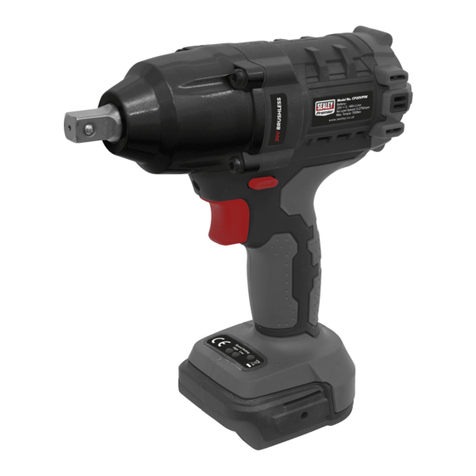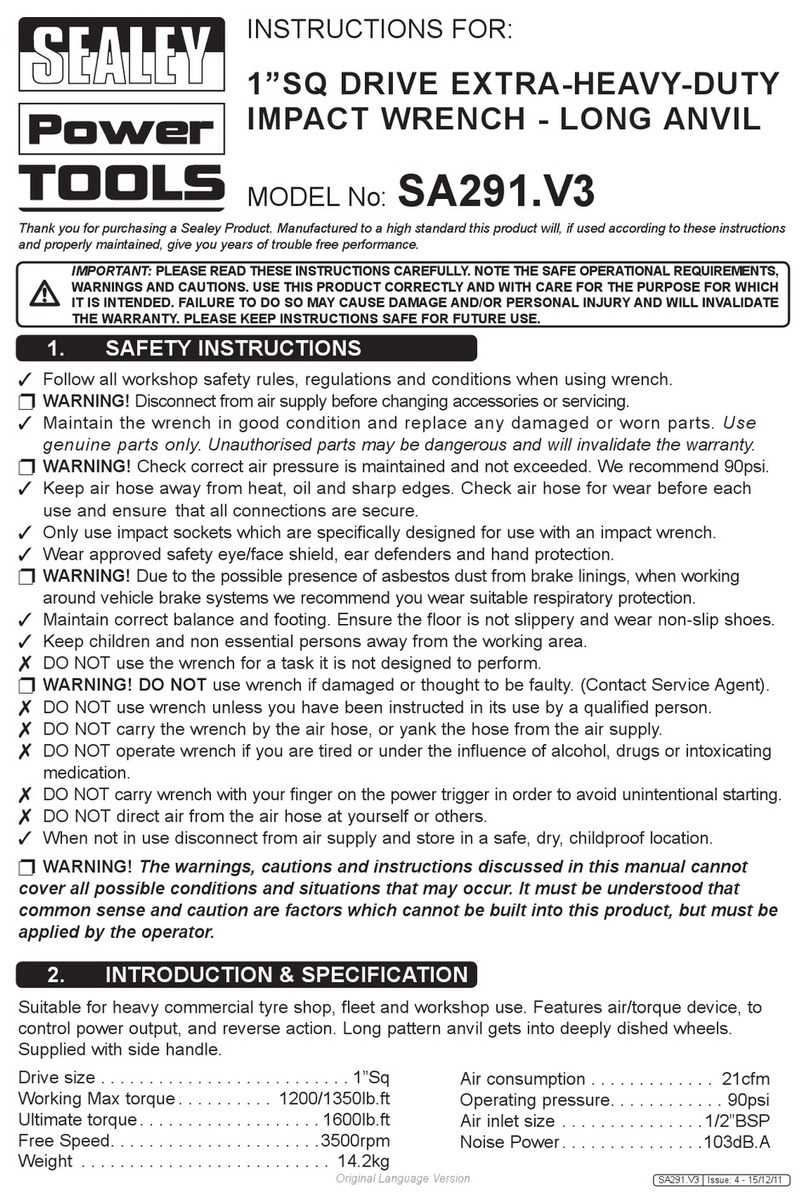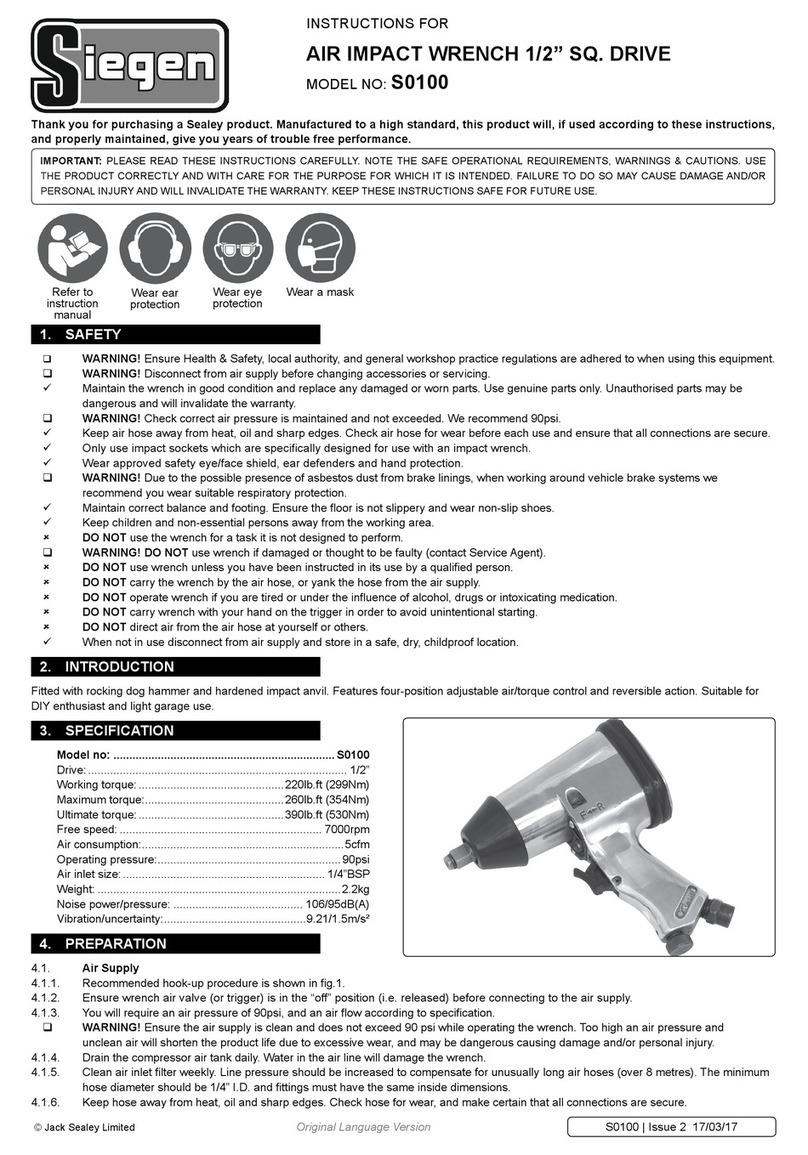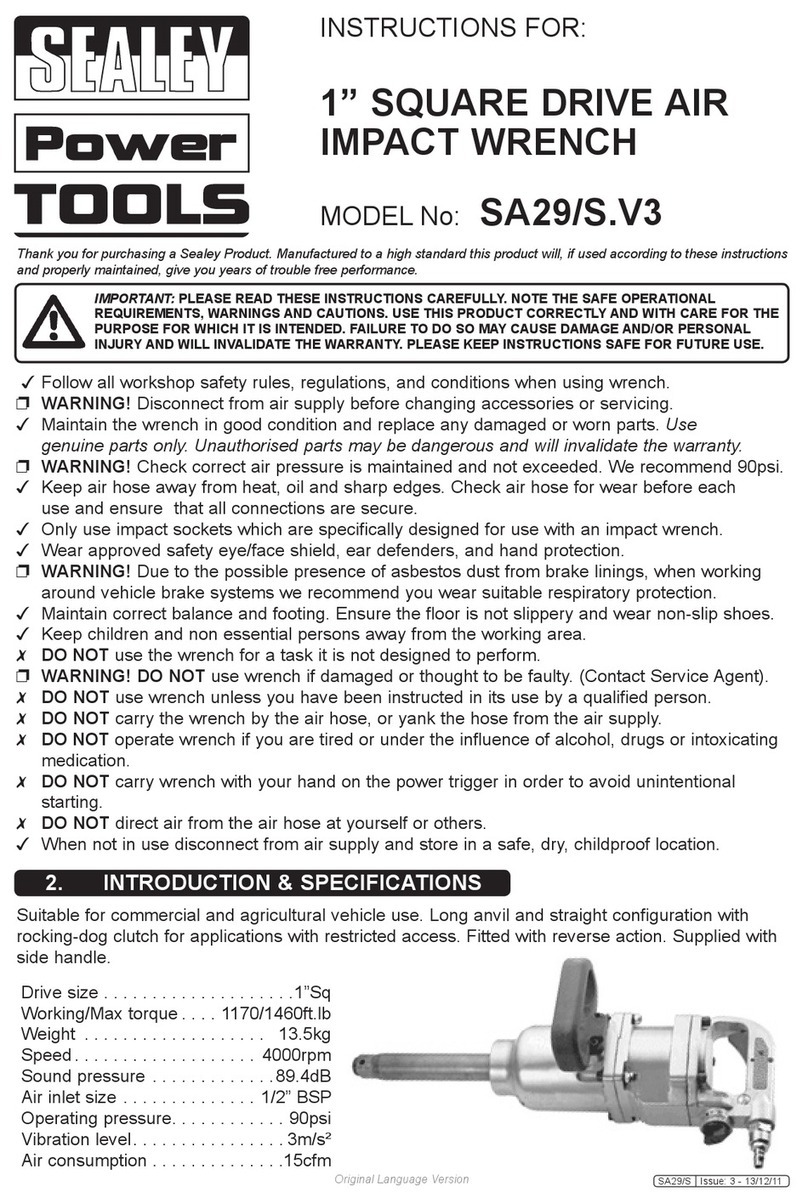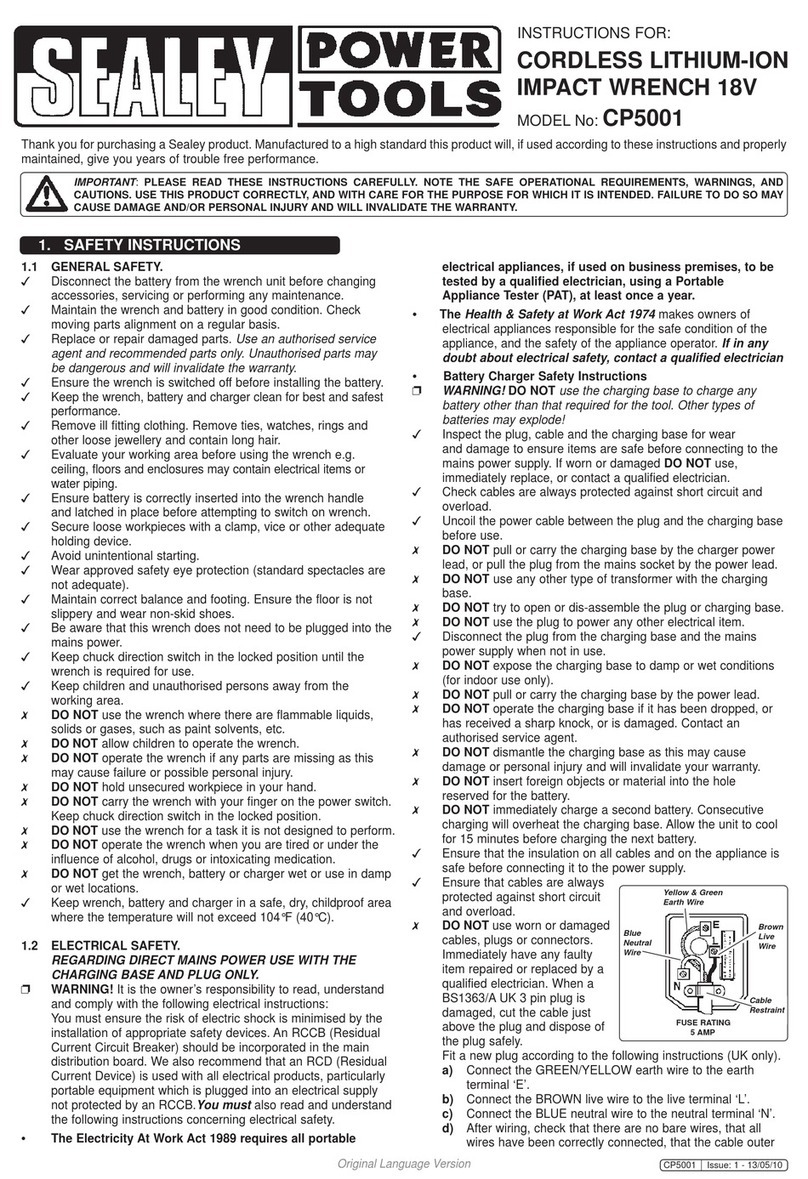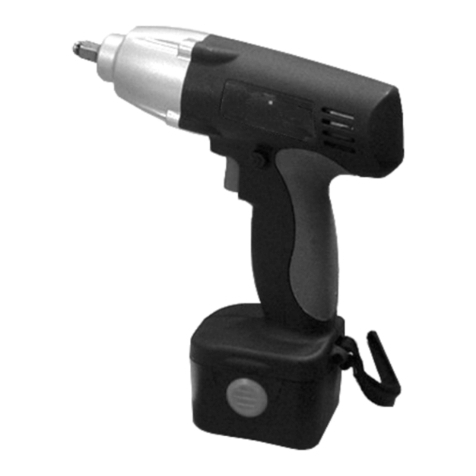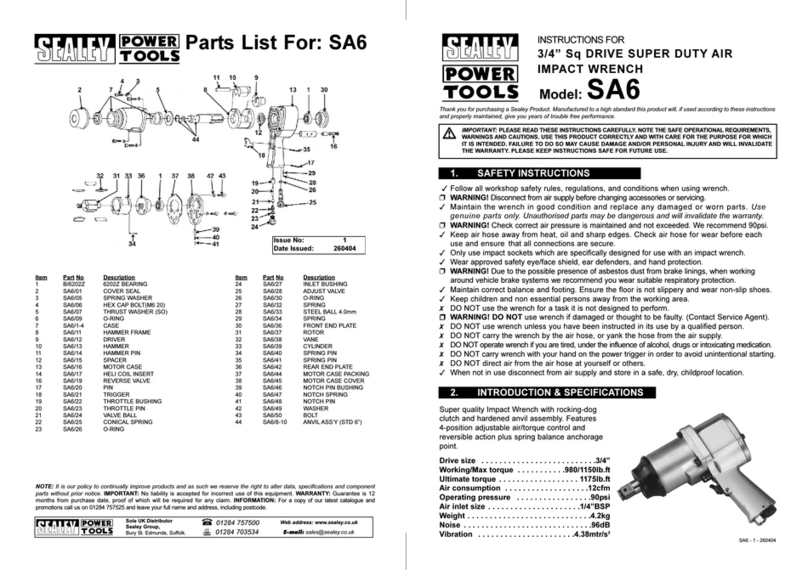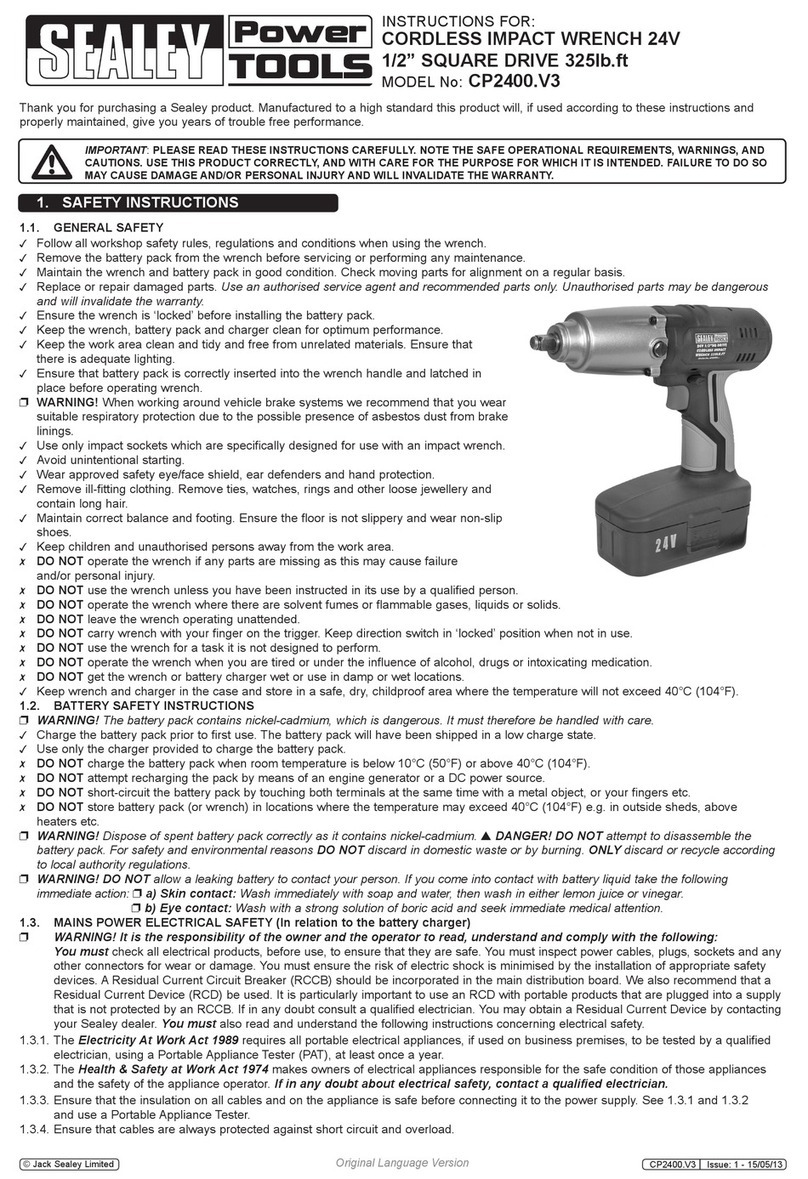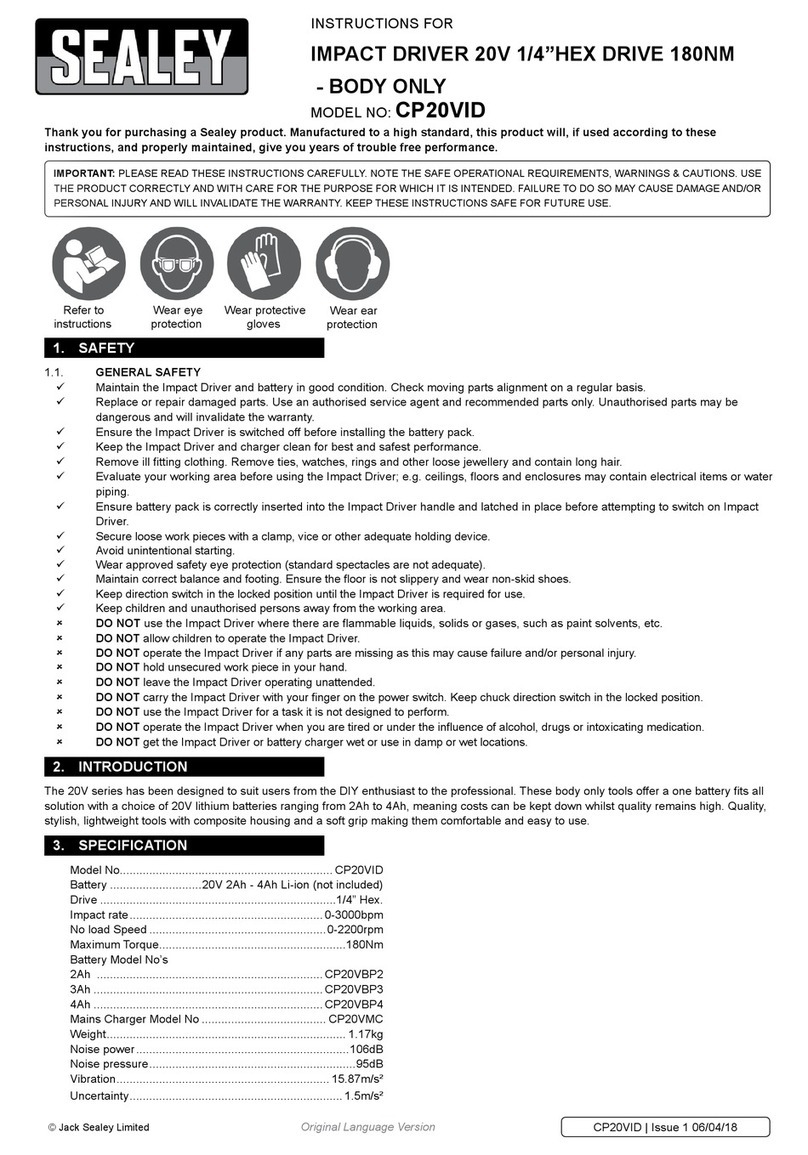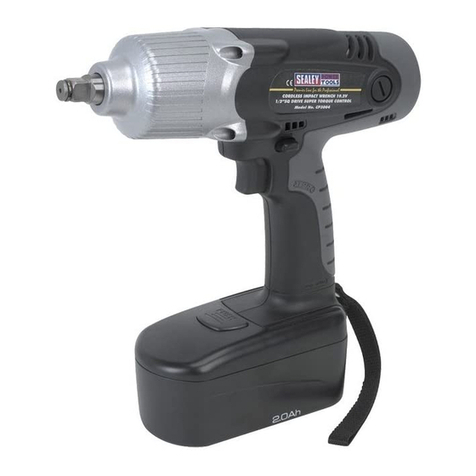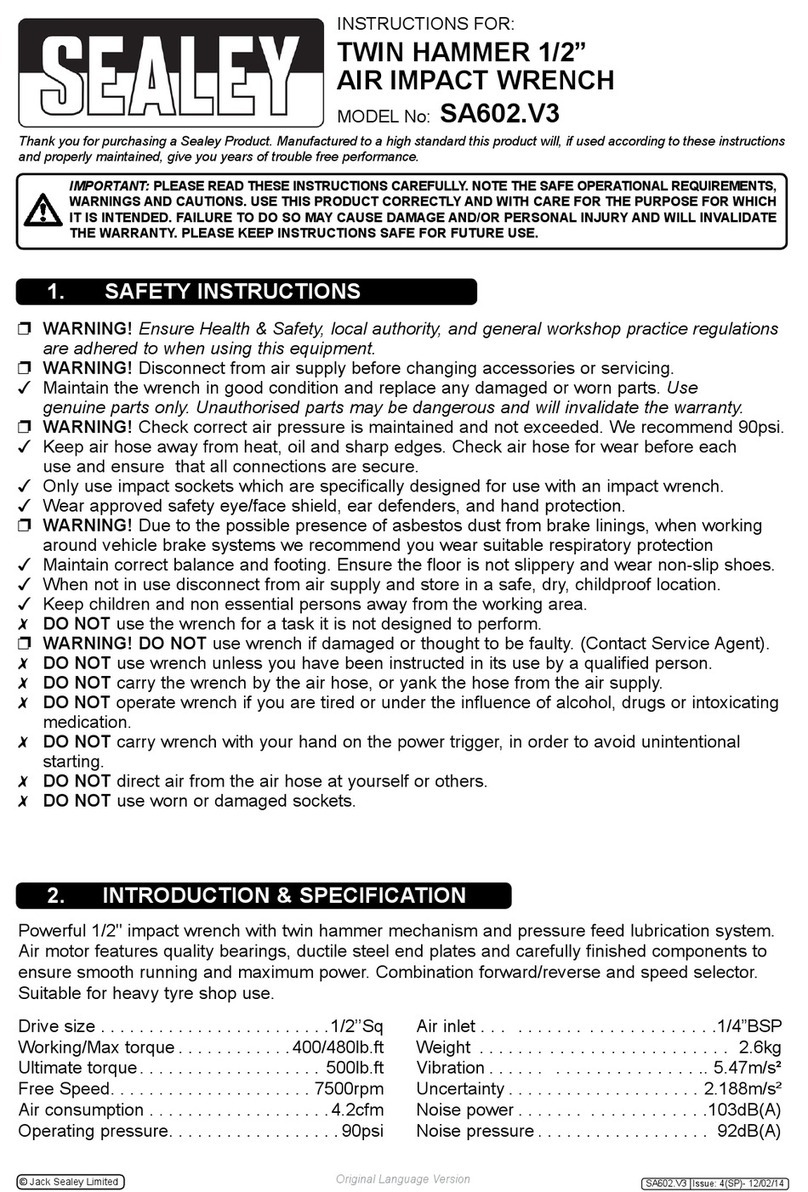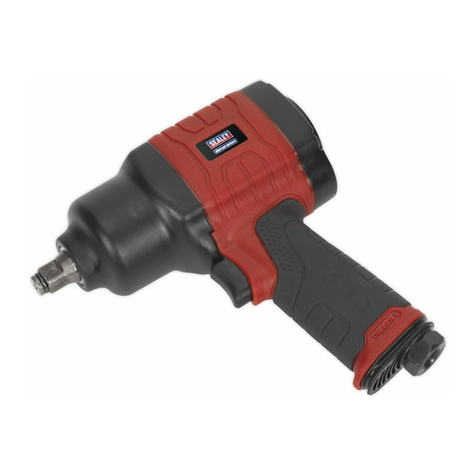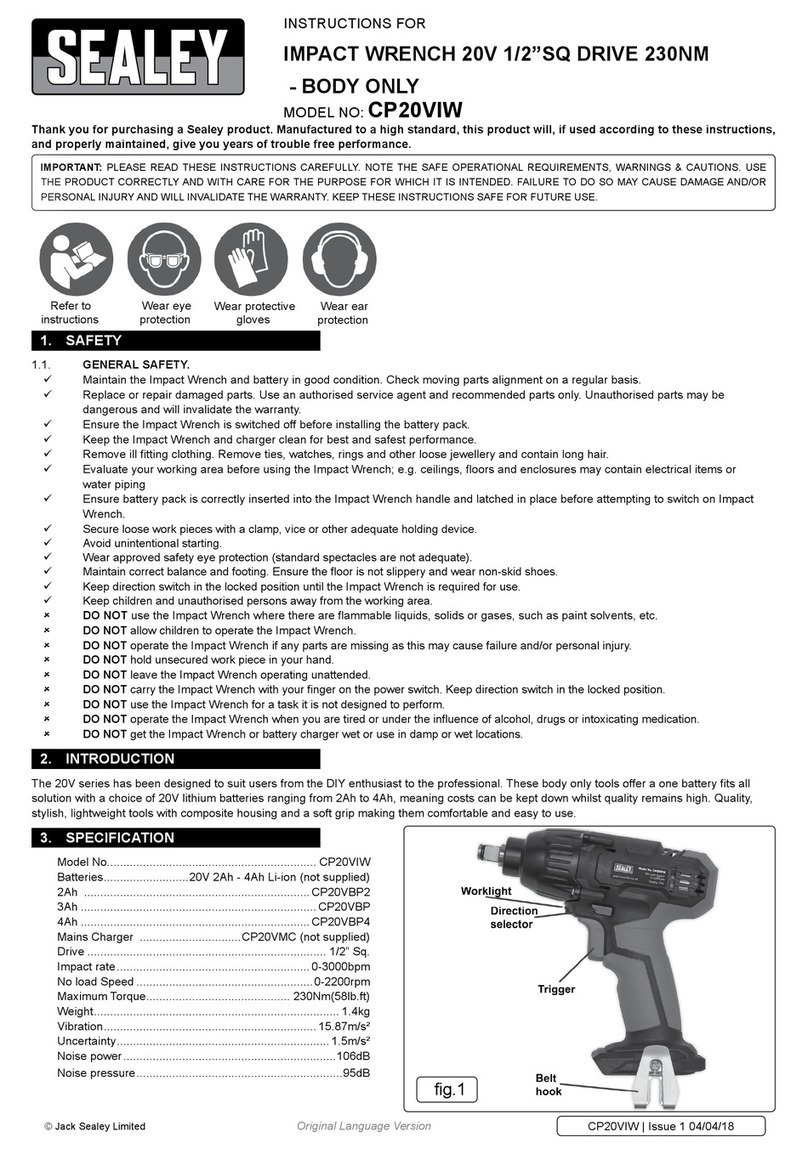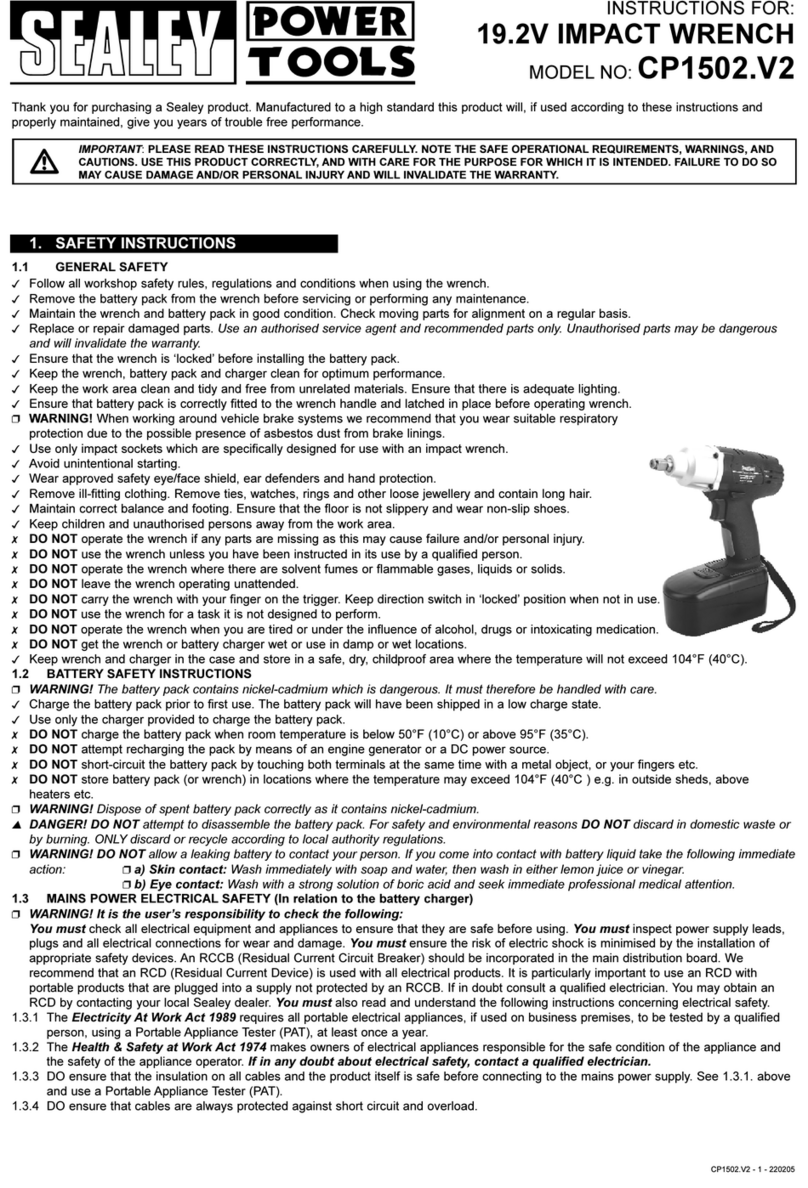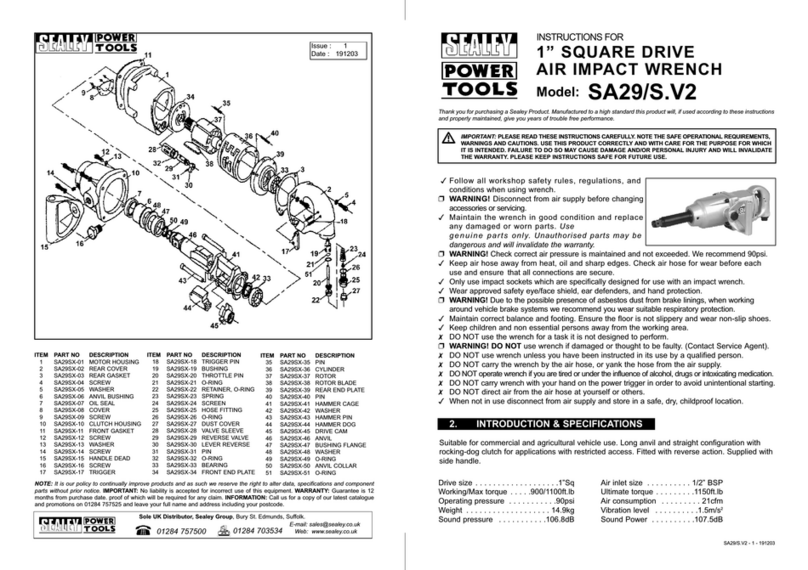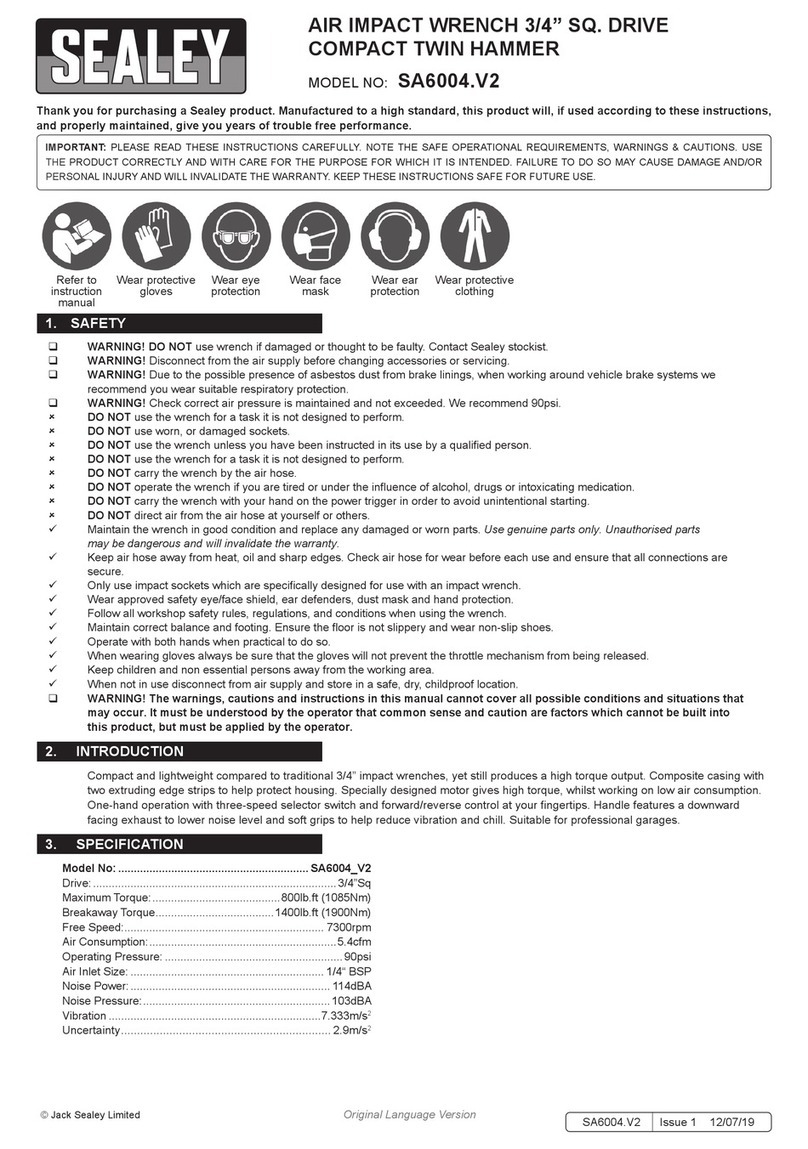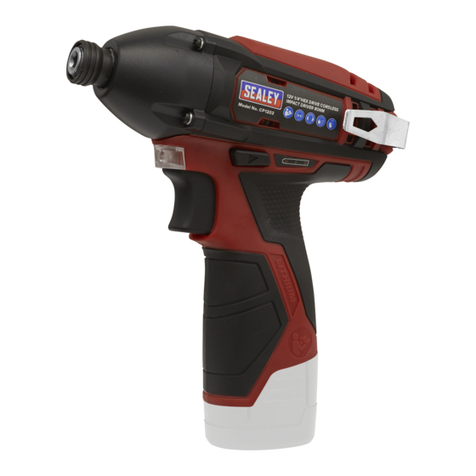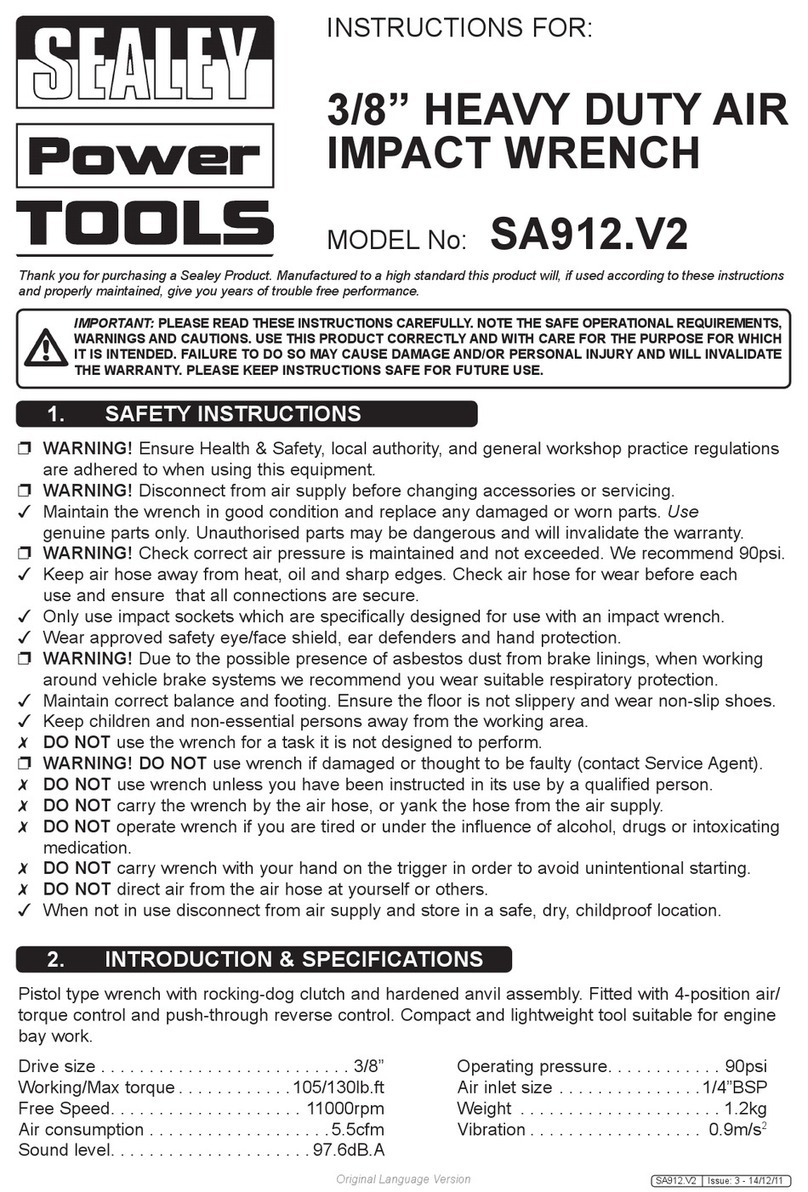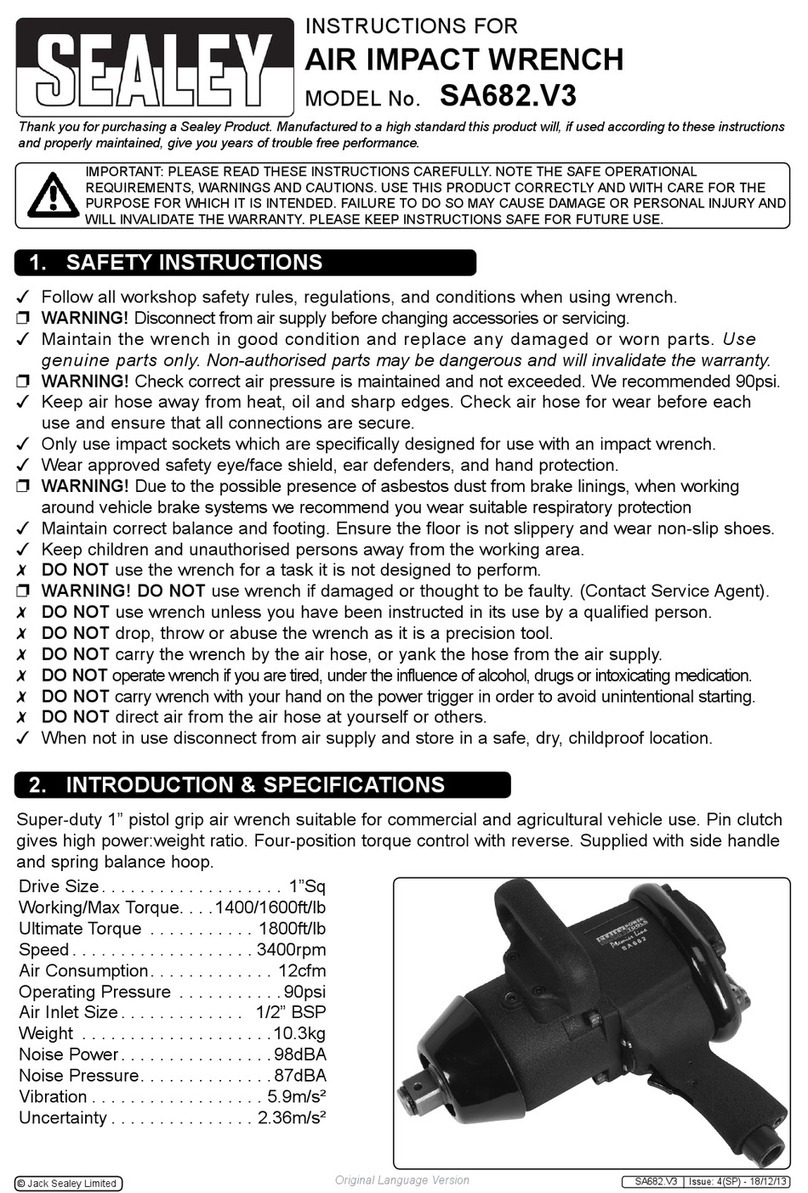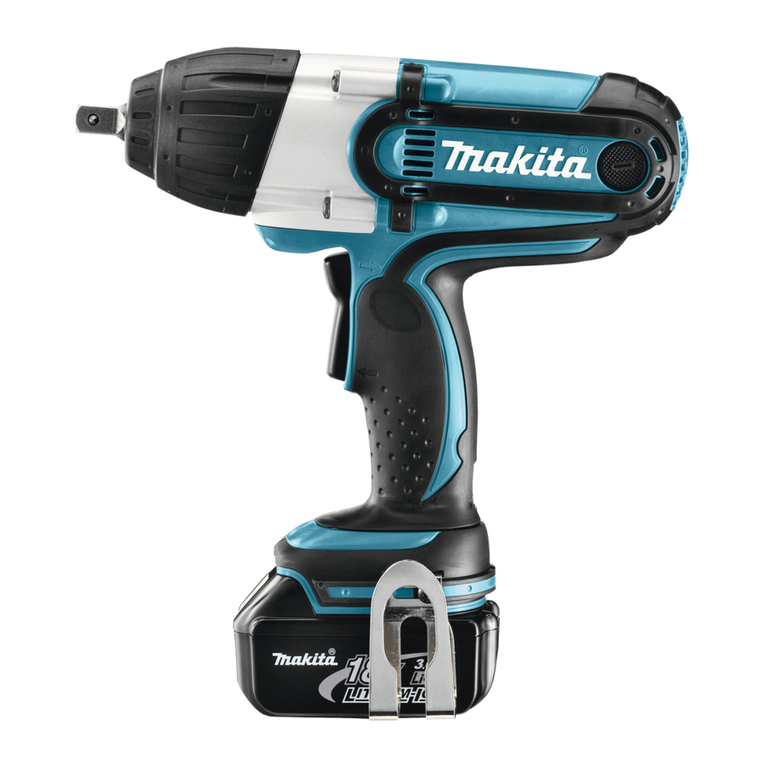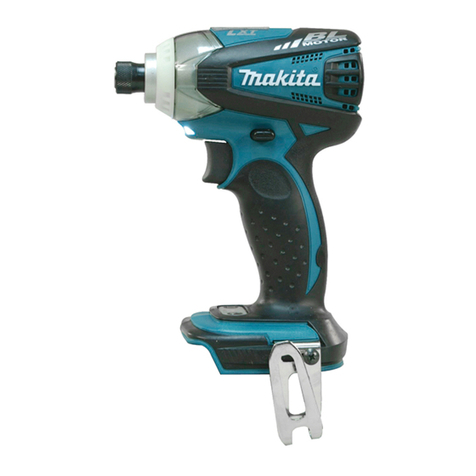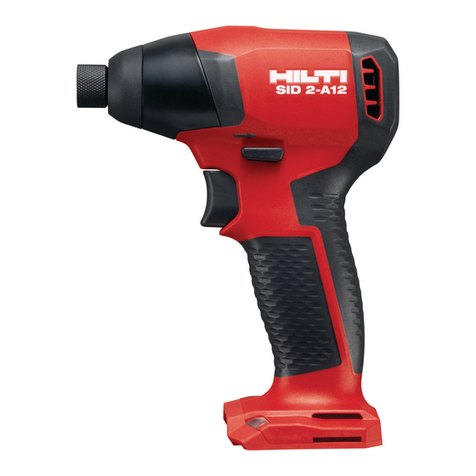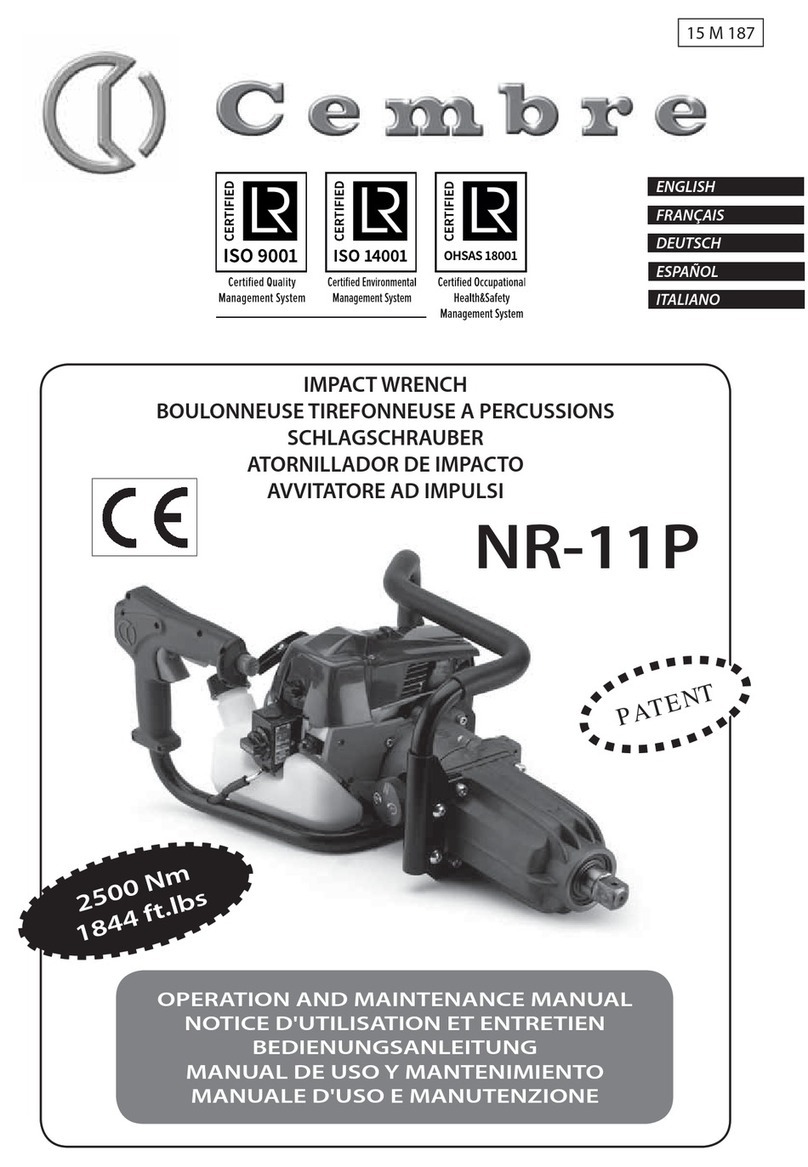
WARNING! – Risk of Hand Arm Vibration Injury.
This tool may cause Hand Arm Vibration Syndrome if its use is not managed adequately.
This tool is to be operated in accordance with these instructions.
Measured vibration emission value (a): .................. 7.7m/s²
Uncertainty value (k):................................. 1.65m/s²
Please note that the application of the tool to a sole specialist task may produce a different average vibration emission.
We recommend that a specific evaluation of the vibration emission is conducted prior to commencing with a specialist task.
A health and safety assessment by the user (or employer) will need to be carried out to determine the suitable duration of use for
each tool.
NB: Stated Vibration Emission values are type-test values and are intended to be typical.
Whilst in use, the actual value will vary considerably from and depend on many factors.
Such factors include; the operator, the task and the inserted tool or consumable.
NB: ensure that the length of leader hoses is sufficient to allow unrestricted use, as this also helps to reduce vibration.
The state of maintenance of the tool itself is also an important factor, a poorly maintained tool will also increase the risk of Hand
Arm Vibration Syndrome.
PREPARING FOR USE.
Air Supply.
WARNING!
Ensure the air supply is clean and does not exceed 90psi while operating the tool.
Too high an air pressure and unclean air will shorten the product life due to excessive wear and may cause damage and/or
personal injury.
Ensure that the tool air valve (or trigger) is in the “off” position before connecting to the air supply.
Monitor the compressor daily to ensure that moisture is not present in the compressed air. Water in the air line will damage the tool.
Line pressure should be increased to compensate for unusually long air hoses (over 8metres).
The minimum hose diameter should be ¼” internal diameter. Fittings must have compatible inside dimensions.
Keep hoses away from heat, oil and sharp edges. Check hoses for wear and ensure that all connections are secure.
Couplings.
Vibration may cause failure if a quick change coupling is connected directly to the tool.
To overcome this, connect a leader hose to the tool (Sealey ref: AH2R or AH2R/38).
A quick change coupling may then be used to connect the leader hose to the air line recoil hose.
CORRECT USE.
Vibration emission is closely linked to the operating pressure in the air supply. The user should ensure that the pressure is set in
accordance with our recommendations to assure optimum efficiency and minimise vibration exposure.
• Ensurethatthetooliscorrectlyalignedtothework.Misalignmentincreasestheriskofvibrationinjury.
• Ensurethatconsumablesareselected,maintainedandreplacedinaccordancewithSealeyInstructions.
• Sleevefittingsmustbeusedwherepossible.
• Alwayssupportthetoolinastandoronabalanceroratensiondevicewherepossible.
• Ensurethattheoperatorissufficientlyexperiencedinordertobeabletohandleandoperatethetoolcorrectly.
• Ensurethatthetoolisheldwithalightbutsecuregrip.Avoidexcessivegripforceasthiswillincreasetheriskofvibrationinjury.
MAINTENANCE.
If the air system does not have an oiler, lubricate the air tool daily with a few drops of Sealey air tool oil dripped into the air inlet.
Clean the tool after use.
DO NOT use worn or damaged grinding discs (if applicable).
Loss of power or erratic action may be due to the following:
Excessive drain on the air line. Moisture or restriction in the air pipe. Incorrect size or type of hose connectors. To remedy, check
the air supply and follow instructions in the PREPARING FOR USE section.
Grit, residual deposits (gum) in the tool may also reduce performance.
Remove the strainer. Clean the strainer and flush the tool out with gum solvent oil or an equal mixture of SAE No: 10 oil and
paraffin.
Allow the tool and strainer to dry then lubricate before use.
For a full service, contact your local Sealey service agent.
When not in use, disconnect the tool from the air supply, clean the tool and store the tool in a safe, childproof, location.
Health surveillance.
We recommend a programme of health surveillance to detect early symptoms of vibration injury so that management procedures
can be modified accordingly.
Personal protective equipment.
We are not aware of any personal protective equipment (PPE) that provides protection against vibration injury that may result from
the uncontrolled use of this tool. We recommend a sufficient supply of clothing (including gloves) to enable the operator to remain
warm and dry and maintain good blood circulation in fingers etc. Please note that the most effective protection is prevention, please
refer to the Correct Use and Maintenance section in these instructions.
Guidance relating to the management of hand arm vibration can be found on the HSC website www.hse.gov.uk - Hand-Arm
Vibration at Work.
